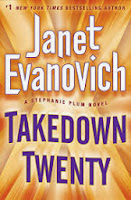So, I decided it was time to delve in once more and started to read it again. Atwood's story is one of speculative fiction; an alternative possible future, bleak and dark. The world has been forever changed by some sort of disaster and the themes that run through the book - genetic engineering, environmental degradation, disease, child abuse, pornorgraphy, globalisation - are all too real, making this a cautionary tale.
We begin by meeting Snowman, who sleeps in a tree, clad only in a tattered bed sheet. He could be the last man on earth, foraging for food in the wasteland. Snowman appears to be the custodian of a group of humans known as the Children of Crake. He is haunted by memories of Oryx and Crake and begins a journey back to the RejoovenEsense compound where Crake's Paradice Project took place. As he travels, Jimmy thinks back on his past.
Snowman recalls his childhood when he was known as Jimmy and lived among the privileged families in a secure compound set up by the HelthWyzer corporation. Beyond the fence line are the pleeblands, shanty towns of lawlessness where the unchosen masses reside. Jimmy's genographer father works for OrganInc Farms which serialises in hybrid animals like pigoons, created to grow human organs for transplant. Jimmy's mother leaves the family and becomes an activist in the pleeblands, wanted by the CorpSeCorps police.
Jimmy meets Crake at school and the two boys are seemingly each other's only friend. They play violent video games, watch pornography and smoke weed. Among their favourite activities is a game called Extinctathon. After high school Crake and Jimmy drift apart and as the novel progresses you learn of the different paths they took leading up to the disaster.
Atwood's fertile imagination coupled with her knowledge of pop culture and the natural world, brings us incredible spliced animals (snags, bob-kittens, woolvogs), horrific websites (live murders), bizarre processed foods (ChickieNobs, SoyOBoy, Joltbars, Happicuppa coffee), strange clothing (sweat-eating gym suits) and pharmaceuticals (BlyssPluss aphrodisiacs).
Where I think the novel could have been richer is in the creation of these characters. Jimmy is a likeable buffoon who bumbles through life and as the focal point of the story he has a limited depth for the protagonist. But the title characters are not drawn in as much detail, and are ultimately two-dimensional. It was hard to care about what happened to them as they seemed so unreal and distant.
 Perhaps it is because of these characters that I was not drawn into the story and it took me longer to finish the book than I had anticipated. However I did enjoy the book immensely and am pleased that I have now read it.
Perhaps it is because of these characters that I was not drawn into the story and it took me longer to finish the book than I had anticipated. However I did enjoy the book immensely and am pleased that I have now read it.  The story continues in The Year of the Flood (2009) and MaddAddam (2013), which I will add to my to-be-read list so I can explore this world a bit further.
The story continues in The Year of the Flood (2009) and MaddAddam (2013), which I will add to my to-be-read list so I can explore this world a bit further. Oryx and Crake was shortlisted for the Booker Prize. My reviews review of Atwood's Alias Grace (1996) and The Handmaid's Tale (1985) are also available on this blog.









